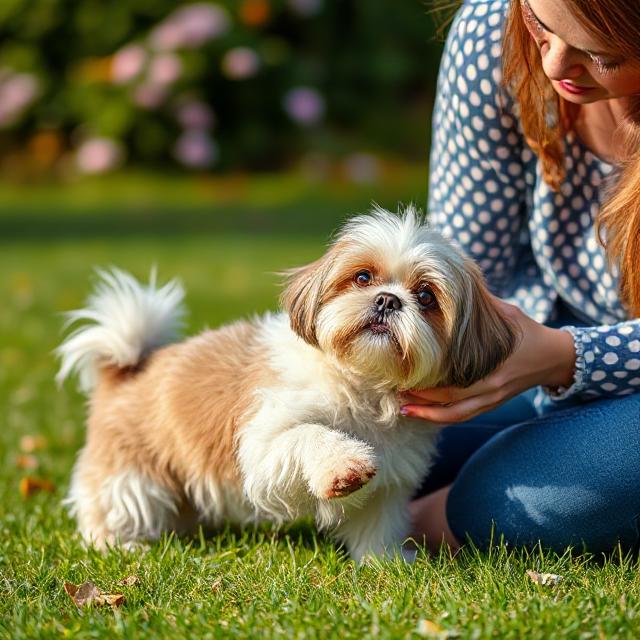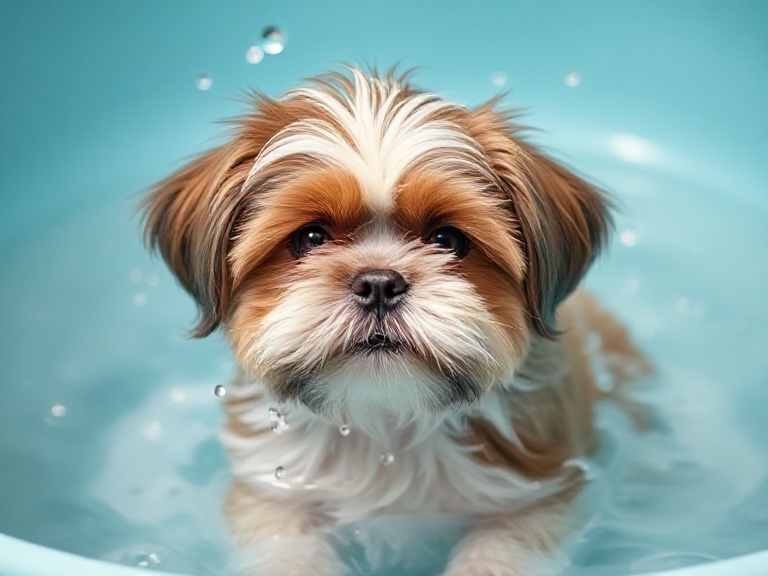If you share your home with a Shih Tzu, you already know: that gloriously fluffy coat doesn’t stay photo-ready on its own. Bathing is essential—but it doesn’t have to be a struggle. Here’s a practical, vet-informed guide to keep your Shih Tzu clean, comfortable, and smelling great.
What Makes Shih Tzu Bathing Different
- Double coat: They have a dense undercoat and longer topcoat that mats easily, especially around ears, armpits, and tail.
- Skin sensitivity: Prone to dryness and allergies, so harsh shampoos or frequent baths can irritate.
- Flat face (brachycephalic): Extra care around the nose, eyes, and mouth. Keep water and soap away from their face and ensure quick drying to prevent chills.
How Often Should You Bathe a Shih Tzu?
- Pet/short trim: Every 3–4 weeks.
- Full coat/show length: Every 2–3 weeks to prevent matting and odor.
- Very active/outdoor pups: As needed—but avoid overbathing. If your dog gets stinky between baths, try a rinse with water only or use a dog-safe dry shampoo on the body (never the face).

Pre-Bath Prep (This part saves you time and tangles)
- Brush first:
- Use a slicker brush for the topcoat and a greyhound comb for deeper sections.
- Work in small layers from the feet up, preventing tugging.
- Deal with mats before water—wet mats tighten and get worse.
- For small tangles: apply a detangling spray and gently tease with the comb’s tip.
- Protect the ears:
- Place a small cotton ball loosely in each ear to keep water out.
- Gather supplies:
- Tearless face wash or micellar pet cleanser
- Gentle, sulfate-free dog shampoo (oatmeal, aloe, or hypoallergenic)
- Conditioner or conditioning mask (protein-light, silicone-light)
- Detangling spray/leave-in conditioner
- 2–3 absorbent towels, non-slip bath mat
- Cup/spray nozzle with gentle pressure
- Ear cleaner, eye-safe wipes, soft toothbrush for facial folds
- Dryer with cool/warm (not hot) setting, pin brush/slicker, comb
Bathing Step-by-Step
- Water temperature: Lukewarm—think baby bath. Too hot or cold can stress the skin.
- Rinse the body first: Start at the neck, avoid the head for now. Saturate thoroughly.
- Shampoo the body:
- Dilute shampoo 1:5 to 1:10 with water to help spread evenly and rinse cleanly.
- Massage gently down to the skin, lifting the coat as you go (don’t scrub in circles; it causes tangles).
- Pay attention to sanitary areas, paw pads, armpits, and the tail.
- Clean the face separately:
- Use a tearless cleanser on a damp cloth or sponge.
- Wipe the muzzle, cheeks, and under-eye area (Shih Tzu tear stains are common). Never pour water over the face.
- Rinse thoroughly:
- Rinse until the water runs clear and the coat feels squeaky. Residue causes itchiness and dullness.
- Condition:
- Apply a light conditioner or mask, focusing on feathering (ears, legs, tail) where tangles form.
- Let it sit 2–3 minutes, then rinse well. If you need slip for brushing, leave a tiny bit in, or follow up with a leave-in spray after towel-drying.
Drying (Where the magic happens)
- Towel first: Press—don’t rub—the coat to remove excess water. Rubbing creates knots.
- Blow-dry while brushing:
- Use cool to warm air, low to medium speed.
- Work in sections, brushing the hair straight as you dry to prevent waves and mats.
- Keep the nozzle moving and a hand between dryer and skin to gauge heat.
- Face and folds:
- Gently pat dry the muzzle and any facial folds. A soft toothbrush can help fluff the mustache area while drying.
- Finish with a comb-through:
- Check behind ears, armpits, and inner thighs for sneaky tangles.

Trimming and Finishing Touches
- Eyes: Carefully trim the fringe if it pokes into the eyes, or tie topknot hair away. If you’re unsure, leave it to a groomer.
- Paws: Check and trim hair between pads to prevent slipping and debris buildup.
- Sanitary trim: A neat trim under the tail keeps things clean between baths.
- Cologne? Optional. Use a pet-safe, alcohol-free spritz sparingly.
Common Problems and Fixes
- Matting returns fast:
- Increase brushing frequency (5–10 minutes daily for full coats).
- Use a light leave-in conditioner after every bath and quick spritzes before brushing.
- Itchy skin after baths:
- Switch to hypoallergenic, fragrance-free shampoo and rinse more thoroughly.
- Space baths to every 4 weeks and add omega-3s (ask your vet for dosing).
- Tear stains:
- Wipe daily with a saline or eye-safe wipe.
- Keep facial hair dry; moisture encourages staining and yeast.
- Ask the vet to rule out allergies or blocked tear ducts.
- Red, stinky skin in folds:
- Dry better and consider a vet-approved antifungal/antibacterial wipe for the folds.
Puppy-Specific Tips
- Start early (10–12 weeks, after vet guidance) with very gentle, short sessions.
- Make it positive: treats, calm voice, and short handling drills before bath day.
- Teach “chin rest” and “stand” for calmer grooming.
Recommended Tools (budget to pro)
- Brushes: Quality slicker (e.g., Chris Christensen-style), stainless steel comb.
- Dryer: Pet-specific forced-air dryer with variable speed and cool/warm settings.
- Shampoo/Conditioner: Hypoallergenic or sensitive-skin lines; avoid heavy perfumes and human products.
Quick Bath-Day Checklist
- Pre-brush and detangle
- Protect ears with cotton
- Lukewarm water, dilute shampoo
- Clean face separately
- Rinse, condition, rinse again
- Towel press, blow-dry while brushing
- Comb-check trouble areas
- Reward with treats and cuddles
When to See a Groomer or Vet
- Severe matting (don’t cut mats at home—skin is easy to nick).
- Persistent itching, redness, hair loss, or foul odor.
- Anxiety that makes home bathing unsafe.
- Eye issues: discharge, pawing at eyes, cloudiness, or squinting.
Bottom Line
A good Shih Tzu bath is 60% prep and drying, 40% washing. With the right products, patient handling, and a steady routine, your dog will look fresh, stay comfortable, and learn to actually enjoy spa day at home.
